Penned by Board Member Ms. Alo Pal
In front of the students were three banners: one from the Government of Puducherry about the “National Action Plan for Drug Demand Reduction” (NAPDDR), one from the school with useful contact numbers, and in the center, a banner from Sharana, creating awareness under NAPDDR through expressive art.
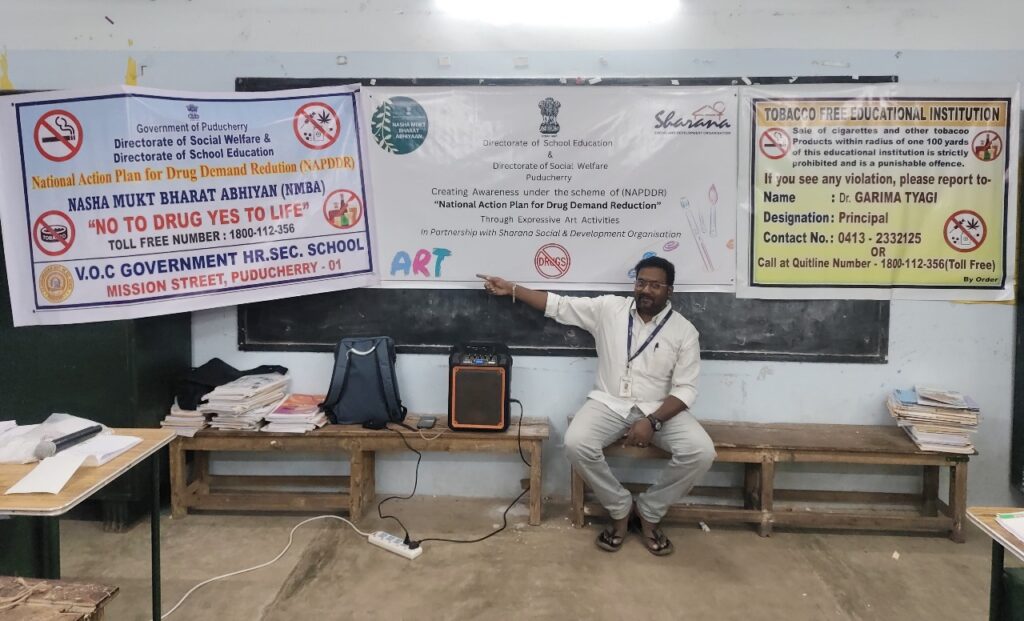
DO WE KNOW WHEN TO STOP
But Manuel didn’t speak about substance abuse to the children assembled. Instead, after a brief exercise enabling the children to be calm, collected, and focused, he let them finger-paint on the sheets with blobs of paint before them. Once you start working with paint, it is natural to have an idea of what you want to express, and you might have also been told that the key to a good painting is knowing when to put the brush down. Interestingly, when Manuel informed the children that they had five minutes left, many of them botched up their paintings with hurried strokes. A simple exercise that revealed that often, despite knowing the end goal, an evident self-check is not as evident.
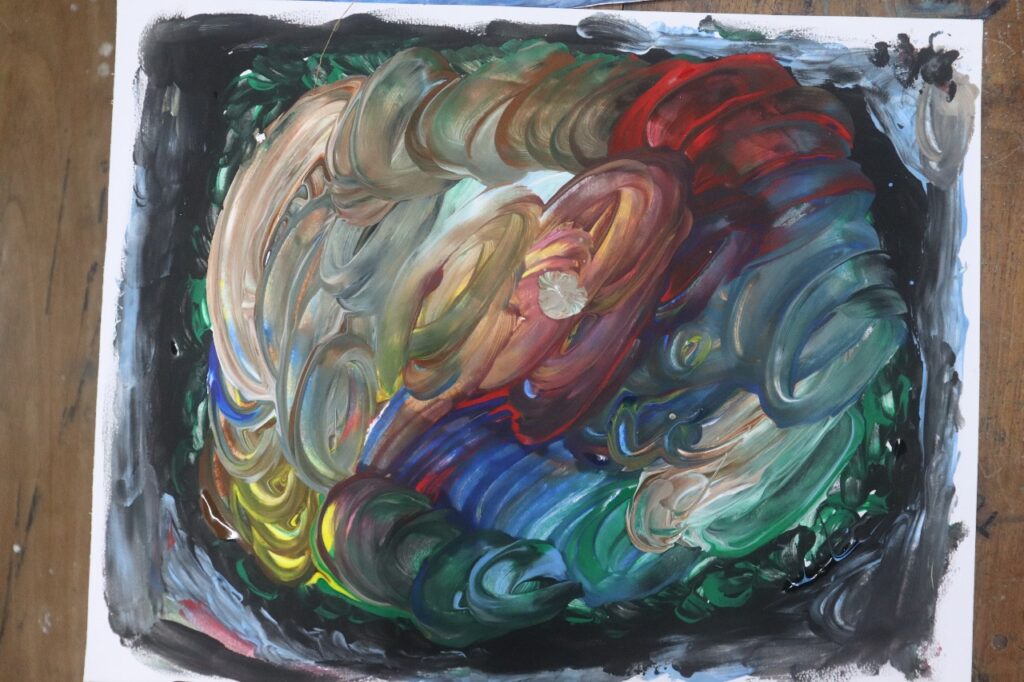
PERCEPTION OF RISK AND RISKY BEHAVIOR
On the left half of the page, the clean side, a soldier in army fatigues, helmet on, gun in hand, is shooting a terrorist dead. On the right half of the page, the risk side, is a story in three images. The first is a scene in a restaurant, where the protagonist is sitting at a table with a friend marked “danger.” “Danger” is showing him porn on his phone (marked 18+), and drugs are mentioned in the frame. The next frame has him, obsessed with porn (18+ marked in red), threatening a girl with a knife. The third picture shows him with a bloodied knife and the girl on the floor, stabbed, bleeding, and murdered. The caption reads, “Danger, My Life.” What struck me was that in the “Risks” section, the student marked the lustful murderer as “me.” A startlingly candid awareness of what he would end up doing if exposed to drugs and pornography.
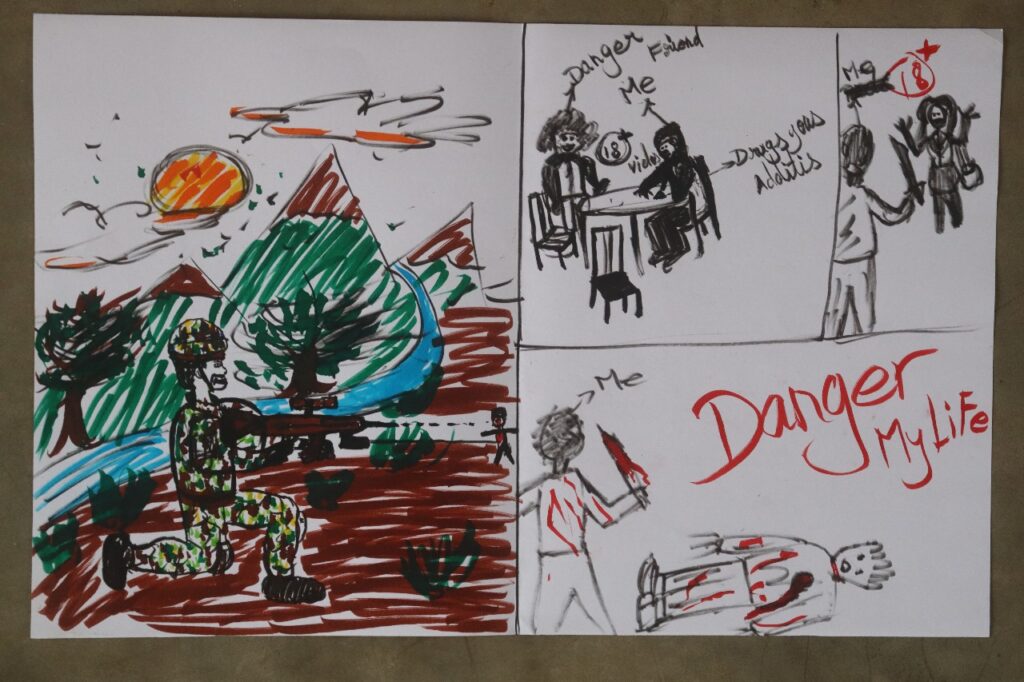
On the “positive” side of another picture, there is a person fishing, captioned “time pass.” In another segment below that, there is a staircase with a child, a person reading a book on a bench, and someone on a sofa watching television. This segment is marked “and playtime.” Below that, a doctor, a student at graduation, and a person reading a book are shown climbing the stairs towards their goal. Finally, there is the image of a man and a woman marked “marriage,” with a man on the staircase marked “settled,” looking at a house.
On the “risk” side of the page under “Risky Way,” the first image is of a man smoking; in the second, he is on a hospital bed with an IV drip, and in the third, he is in what looks like an open casket. Below that is an image of a person with a book marked “no read,” implying that not reading would lead to working as a laborer or begging. The third row urges avoiding smoking, drinking, and using Cool Lip, with the message: “AVOID ALL DRUGS.” The last strip of images states: “No reading, drugs, spoil your life. Stay away from drugs.”

TAKEAWAYS
Across 5 schools, 1098 students have undergone this awareness session. Manuel has collected hundreds of drawings depicting safe conduct and risk perception by urban and predominantly rural children. Other than the banners, the children were not directed to channel their minds toward substance abuse specifically, but the images revealed startling levels of awareness about drugs, their ease of access, usage, addiction traps, and consequences. The session, designed by Manuel, consciously avoided a top-down, information-heavy, risk-and-danger “lecture” method. Instead, he used the time to encourage the children to reflect and draw without fear of judgment or reprimand, demonstrating their latent awareness of the menace. In group discussions and one informal chat session, Manuel understood that “awareness” often meant “consumption,” “used to” meant current use, and innocence or ignorance sometimes meant feigned oblivion.
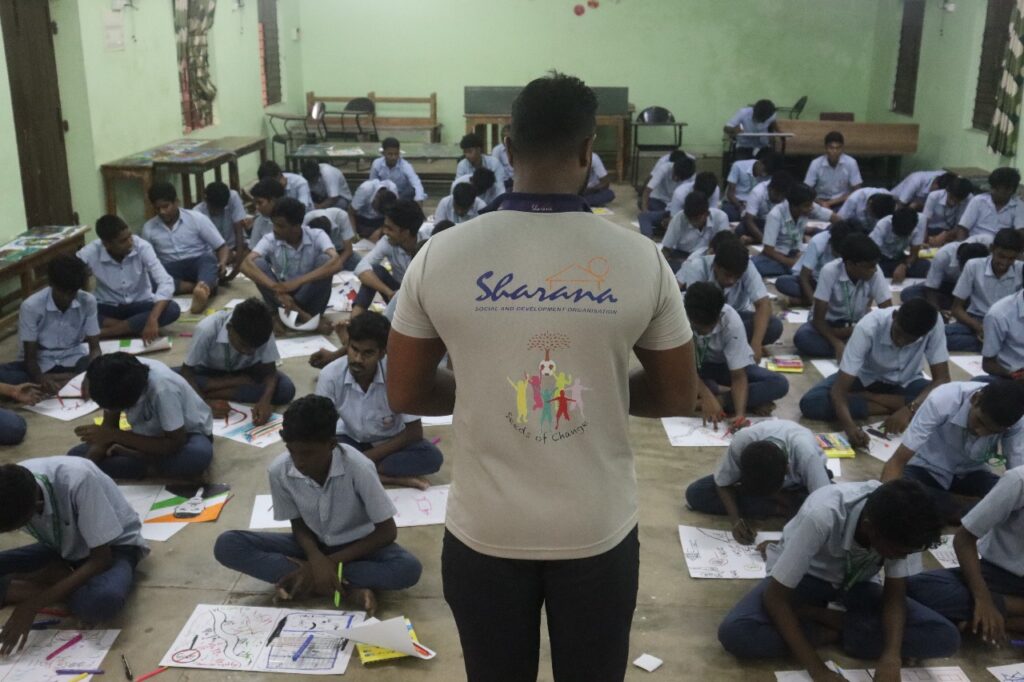
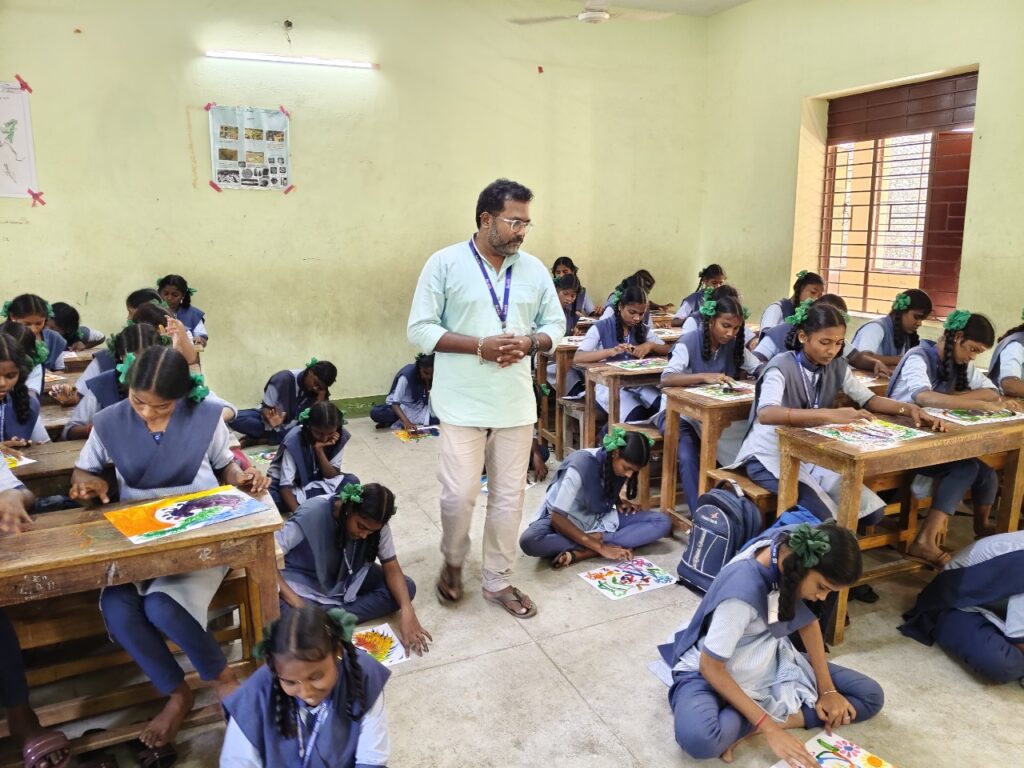
Children knew the various types of drugs. I was personally startled by the precise drawings of cannabis leaves, cigarettes, syringes, and alcohol, along with the direct consequences of ruin, perversion, shattered dreams, and even death. Two particularly disturbing images were the reference to pornography leading to sexual violence under the influence and the dangerously easy availability of substances like Cool Lip, a chewable flavored strip of gum containing doses of nicotine potent enough to cause addiction. There was an awareness of lowered inhibitions, highs, and the possibility of drug-influenced crime.
In contrast, the idea of a clean life on the “risk-free” half of the page clearly showed that the children knew what they stood to gain and could achieve if they stayed clean and focused on education.
It is important, therefore, to know when to stop. Not to take that extra step and get sucked in. To recognize the red lines of each personal weakness and problem, crossing which substances give the illusion of a solution or relief. To be conscious of keeping the picture of life’s aims clean and clear and preventing the murky muddle by putting down the brush at the right time. To step back from the company that makes substances seem cool, from seeking highs to handle personal problems, pressures, and heartbreaks, and from taking another shot when cravings resurface after a crash.
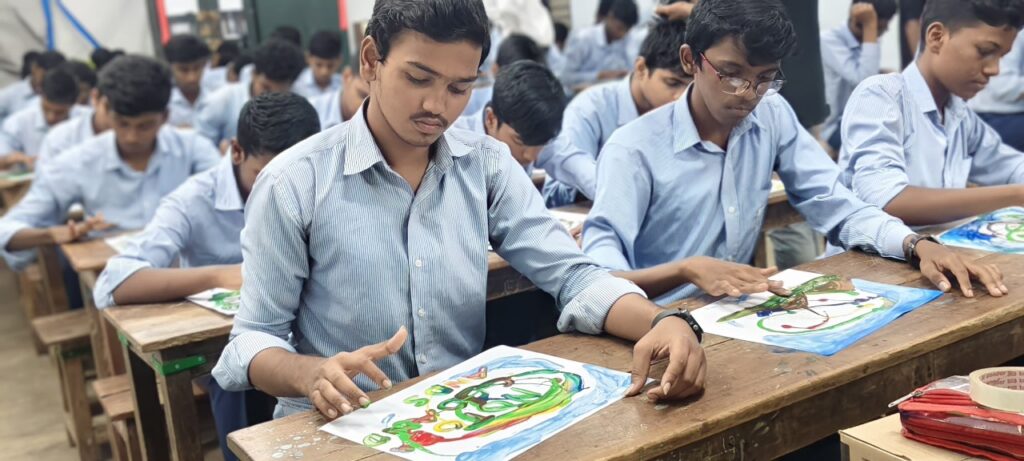
We also need to listen to and observe our young adolescents more closely to understand their pressures. This is, in fact, one of the fundamental principles of Sharana—never to approach a situation thinking we know the problem and, therefore, just need to implement our solution. Rather, we are good listeners who get the target group to define their issues and propose their ideas for solutions. One of the recurring risk perceptions of the students was the sudden and drastic shift from State Boards to CBSE. For the next few years, students from the 8th to 12th standards who have to cope with this transition will be under considerable pressure, and the looming and critical nature of the board exams is perceived as a “risk.” Manuel suggested that the children find an instructor to confide in without fear of judgment. Only then would we be ahead of the race to prevent substance abuse rather than treat addiction. Understanding the problem is the first step toward finding a solution.













